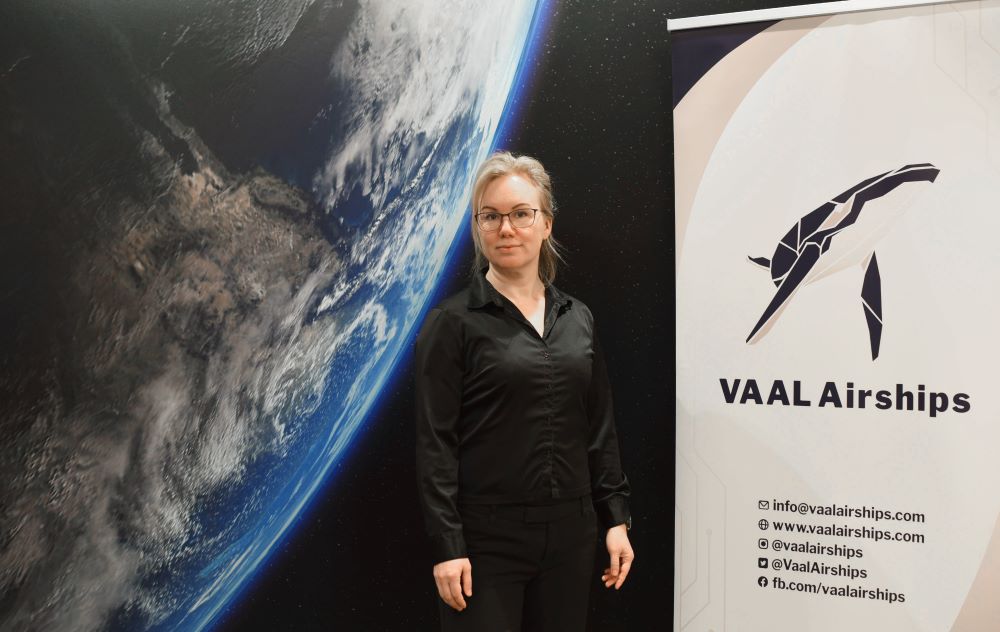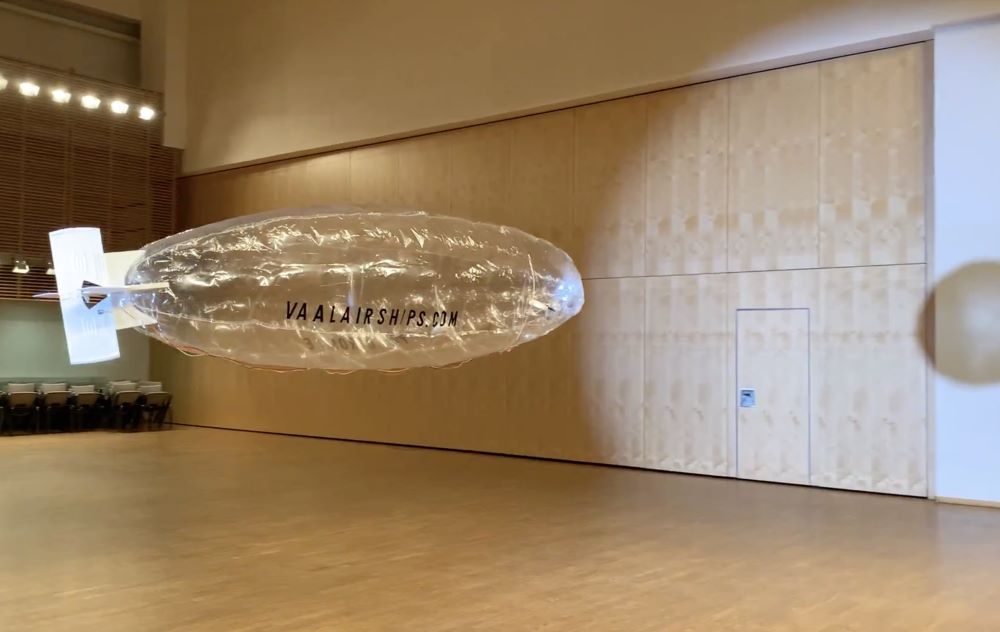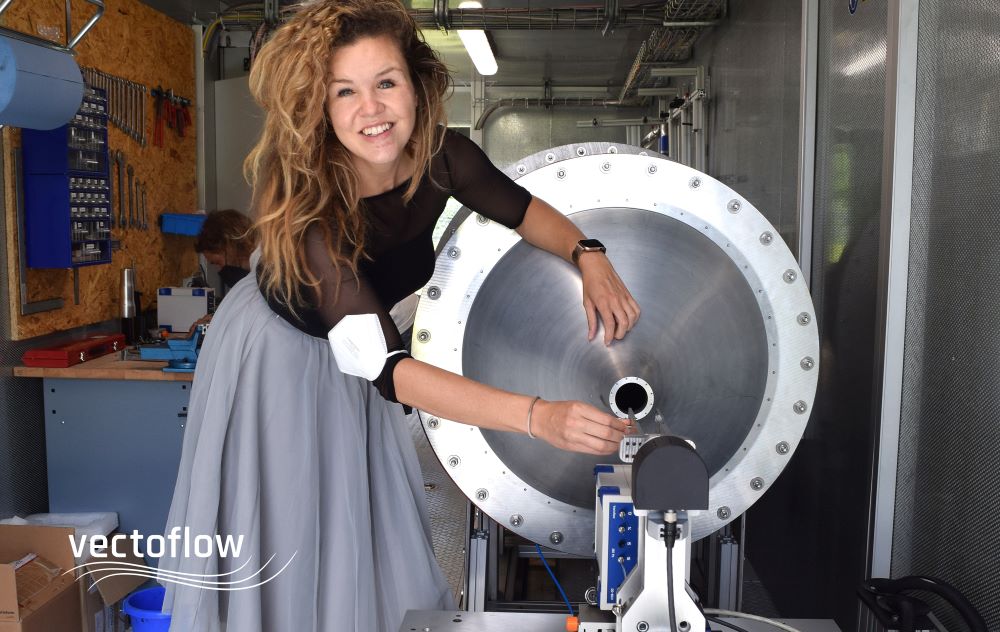In the realm of aerospace and engineering, innovation is the key to overcoming challenges and pushing the boundaries of technology. The European Space Agency Business Incubation Centres (ESA BICs) play a pivotal role in fostering this spirit of innovation, providing a launchpad for start-ups that are shaping the future of technology.
This article spotlights the inspiring journeys of two remarkable female founders, Liina Freivald’s journey with VAAL Airship and Katharina Kreitz of Vectoflow, who have turned their visionary ideas into reality with the support of the ESA BIC programme. Their stories are a testament to the power of perseverance, the impact of mentorship, and the transformative role of ESA BICs in nurturing entrepreneurial talent.
Entrepreneurial resilience at high altitude: Liina Freivald’s journey with VAAL Airships

At 47 years old, Liina Freivald finds herself at an ideal stage in her career to dive into the world of start-ups. Having built a solid foundation from diverse roles in the financial industry and Microsoft, she is no stranger to the complexities of managing multiple responsibilities. “I wasn’t afraid to seek out different experiences early in my career, and that openness eventually led me to roles within the financial sector for over 13 years” she reflects. This varied background equipped her with the business acumen and adaptability necessary to pursue her dream of developing VAAL Airships.
The spark for VAAL Airships ignited in 2019, at a time when the world was grappling with the COVID-pandemic. Isolated but introspective, Liina saw the silver lining in working remotely, saving time, and reflecting on new ideas. “VAAL Airships specifically came alive during the pandemic when I had the chance to participate in two hackathons—one on pandemic solutions, the other a space hackathon organised by ESA BIC” she recalls.
Growing up in Estonia, Liina’s connection to the natural world profoundly shaped her worldview. She developed an affinity for long-term thinking and sustainable business practices. “My parents were farmers and store owners, and everything we did had a business case, whether it was about migrating birds or seasonal farming” she explains. This early exposure to the practicalities of managing small businesses laid the foundation for her later entrepreneurial ventures, which always held an eye toward the future and mutual benefit.
Looking at Earth from the pseudo cosmos
VAAL Airships, as it stands today, is a venture with big ambitions. While still in the early stages, the company has developed a roadmap to offer services akin to those provided by satellites, but through dirigibles. “We’re focused on the pseudo cosmos, around 21 kilometres above Earth. We want to offer services like observability and connectivity, without the environmental and logistical risks that come with launching satellites” Liina explains. One of the key benefits of airships, she notes, is that they avoid contributing to the Kessler syndrome—a scenario where space debris in low Earth orbit could lead to a catastrophic cascade of collisions.

Indoors test of 2 metres long prototype, visualisation of the buoyancy, body type and steering method for the Garage48 hackathon.
Challenges as an entrepreneur
The challenges for Liina have not only been technical but also personal. As a female entrepreneur, she has had to navigate a landscape where feedback can sometimes be skewed by biases. “The hardest part is understanding whether the feedback I’m receiving is helpful or if it’s given because I’m a woman, or neurodiverse” she admits. Despite this, Liina approaches every piece of feedback with a learning mindset, believing that, even if the advice comes from a place of bias, it can still offer valuable lessons. “I tend to assume that I can learn and improve” she adds.
VAAL Airships is not Liina’s first venture—it’s her eighth. Her entrepreneurial journey is one of resilience and reflection, and she often stresses the importance of adaptability. “When you start something new, there will be mistakes. It’s easy to feel like failures are setbacks, but they’re not—they are learning opportunities” she advises. This philosophy of continual learning has driven her to explore not only business but also technology, governance, and sustainability on a planetary scale.
Creating a sustainable future for space exploration
The support of ESA BIC has been pivotal to VAAL Airships’ progress. From connecting her with local developers to offering space entrepreneurship training and access to a broader network across Europe, ESA BIC provided the resources Liina needed to take her vision forward. “They’ve been a huge help, from conferences to contacts, and the Learning Hub has been invaluable” she notes.
Looking to the future, Liina is optimistic about the potential impact of VAAL Airships. With the advancement of lightweight electronics and material technologies, stratospheric observability and connectivity are becoming more feasible. “We hope to offer photos, videos, and internet connectivity from pseudo-space, all while avoiding the risks posed by space debris,” she explains. This vision is not just about providing services; it’s about creating a sustainable future for space exploration and connectivity.
In her closing remarks, Liina encourages collaboration, suggesting that working with a partner on a shared goal can lead to unexpected synergies. “If it’s possible, find a partner and meet once a week to focus on a specific topic. It feels manageable, and it can trigger other ideas in the process” she advises.
Her advice to aspiring entrepreneurs, especially women, is both practical and encouraging. “If financial security is important to you, don’t quit your day job until you can confidently replace your income with your new work,” she advises. Starting small and learning along the way has been a consistent theme in her career, and she emphasises the importance of being patient with oneself. “There are so many obstacles women face—whether it’s microaggressions or simply being underestimated. But with every challenge, there’s an opportunity to learn and grow” she says.
Katharina’s journey: From aerodynamics to entrepreneurship with Vectoflow

Katharina Kreitz, a Munich native and co-founder of Vectoflow, has always been drawn to the world of mechanical engineering. Her academic journey took her through the specialised fields of gas dynamics, aerodynamics, and aeronautics. While at university, she often skipped lectures to immerse herself in the practical side of things, gaining invaluable experience at major companies like Airbus, Lufthansa Technik, NASA, and BMW. It was during these times that Katharina developed a particular frustration with the aerodynamics measurement systems she had to use. “There was only one supplier for the instruments, so there wasn’t much to choose from” she notes, recalling the limited options and inefficiencies.
The lightbulb moment
Her idea for making better instruments was thus born from frustration. She worked on her master’s thesis at BMW, where she met her future co-founder, Dr. Christian Haigermoser. Their shared experiences led to a lightbulb moment. “We both sat in the wind tunnel one day, having trouble with the instruments again, and said to each other: why not make better tools with 3D printing?” Katharina and Christian took this idea to EOS, a leading 3D-printing company in Munich, and pitched their concept. The response was overwhelmingly positive, with EOS recognising the innovative and industrial potential of their idea, paving the way for test prints.
Despite initial success, Katharina and Christian faced a significant hurdle when their application for an economic grant was rejected due to the absence of an “economic person” on their team. This setback did not deter Katharina. Instead, she decided to fill the gap herself, enrolling in a 10-month MBA program. “Finding a co-founder is harder than marriage” she reflects, emphasising the importance of a good fit and the intensity of the start-up journey. After the MBA, they met their third co-founder, Florian Whener, who joined them after completing the same programme.
As the start-up began to take shape, they collaborated with the Technical University of Munich (TUM), gaining access to wind tunnels and working from a space provided by TUM. This marked their first foray into the aerospace sector, with their innovative designs catching the attention of a Formula 1 team. Katharina recalls the excitement and disbelief when they received their first inquiry from the team: “At first, we thought our friends were hacking our website, because we didn’t believe that an F1-team would contact us!”
Their journey led them to the European Space Agency Business Incubation Centre (ESA BIC): “A friend told me about ESA BIC, said to take the (aero)space technology to other areas” Katharina explains. The partnership with ESA BIC was instrumental in providing them with the resources to build their own wind tunnel, a necessity for their work on supersonic testing at Mach 1.5. “At ESA BIC, we got containers to work from. There was a huge hole in the ground, they dug the space out, so we were allowed to build the tunnel there” she adds, underscoring the critical role of the incubation centre in their development.
The only woman in the room
Katharina’s journey as a female entrepreneur was not without its challenges. From her university days, she was often the only woman in the room, facing scepticism and outdated notions about her capabilities. “Guys actually told me to consider doing another study,” she recalls, highlighting the persistent gender biases in her field. Despite these hurdles, Katharina remained undeterred. “I just never listened to it. Just by being a woman, does not mean that I’m not just as good or even better than men” she asserts.
Combining her career with motherhood, Katharina took a brief break after giving birth, but quickly returned to her work. Her family supported her, so she could pursue her start-up.
Inspiring future female founders
Katharina continues, “If you bump into a glass ceiling, you have to find a way around it. If there’s no possibility to get around it, you might have to move away from it, even if it’s just temporary. There are so many other possibilities in other places”.
For aspiring entrepreneurs, Katharina also offers practical advice: “Talk to as many people as possible about your idea. Don’t be afraid that people will steal it”. She also emphasises the importance of self-care when starting a business. “The potential of working too much is higher when you launch your own company, so a strong advice is to have sports next to it. To get your head more relaxed” she suggests.
Today, Katharina is not just a leading entrepreneur but also a mentor, giving talks and workshops to inspire young girls to pursue careers in any field they desire. This includes technical domains. “I want to inspire them and show that they can do whatever they set their mind to”.
This article was written for the occasion of the 20 years anniversary of ESA BIC in Europe.
For the full overview of this celebration, go to the LinkedIn group by clicking on the button below.